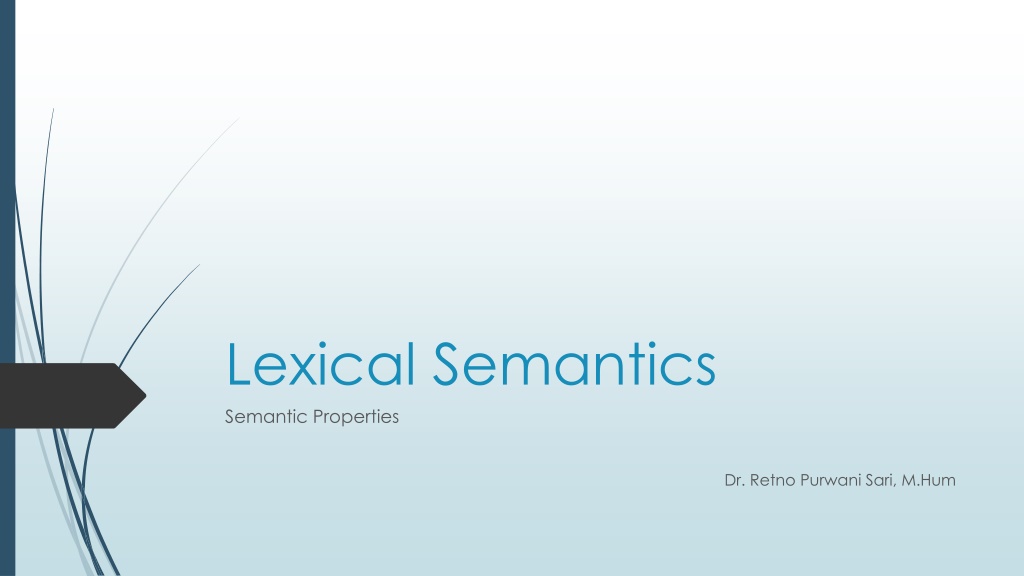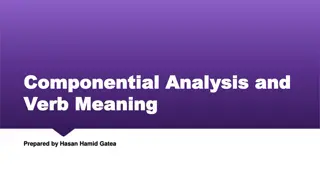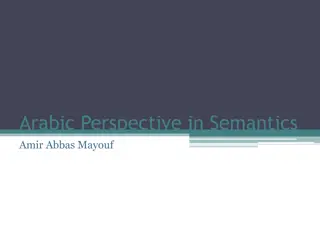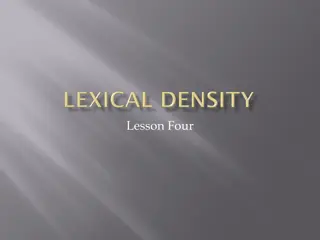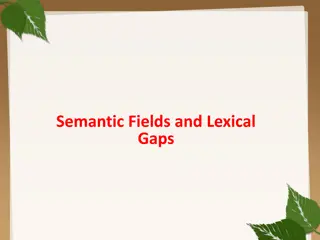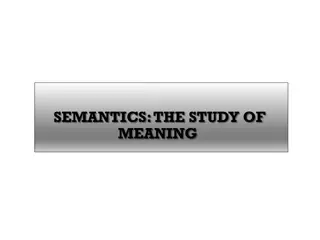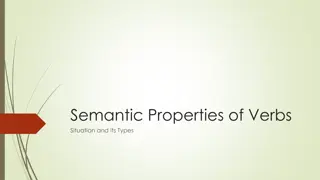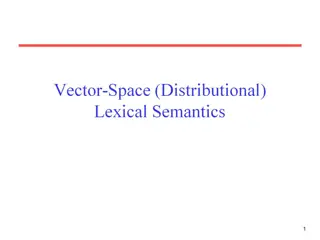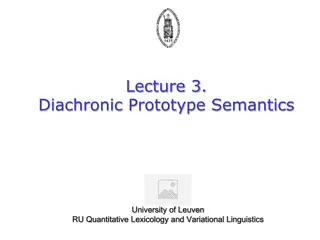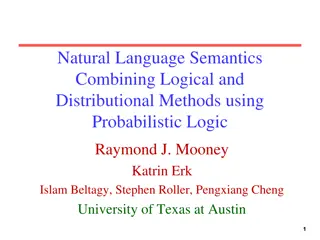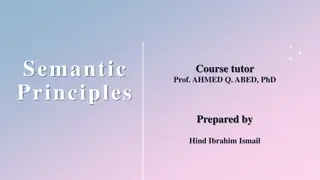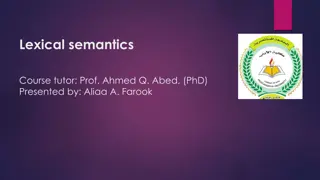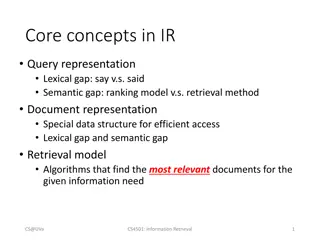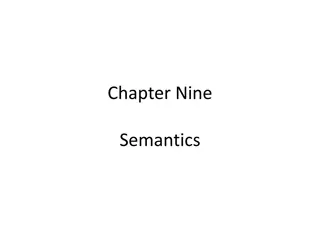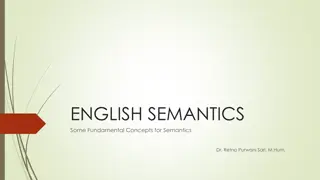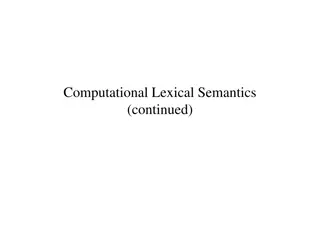Understanding Semantic Properties in Lexical Semantics
Explore the concept of semantic properties in lexical semantics through examples involving word meanings and relationships. Learn how semantic properties form the basic building blocks of language construction, sharing common attributes among words while also showing contrastive distinctions. Dive into the meaning pairs that help convey complex ideas and nuances in language.
Download Presentation

Please find below an Image/Link to download the presentation.
The content on the website is provided AS IS for your information and personal use only. It may not be sold, licensed, or shared on other websites without obtaining consent from the author. Download presentation by click this link. If you encounter any issues during the download, it is possible that the publisher has removed the file from their server.
E N D
Presentation Transcript
Lexical Semantics Semantic Properties Dr. Retno Purwani Sari, M.Hum
Learn! Burung vs Bird Bird Burung [ANIMAL] [BINATANG] [VERTEBRATE] [BERBULU] [AVES] [BERKAKI DUA] [WARM-BLOODED] [TIDAK MEMILIKI TANGAN] [FEATHERS-COVERED BODY] [BERSAYAP] [WINGS] [TERBANG] [BERPARUH]
Meaning pairs Meaning pairs as basic building blocks for language construction. This meaning pairs are some of the semantic properties of the word on which speakers of the language agree. Meaning is compositional (Allan, 2001)
Learn more! The assassin killed Kennedy. The word assassin [HUMAN] [MURDERER] [KILLER OF IMPORTANT PEOPLE] The word Kennedy [HUMAN] [VICTIM] [IMPORTANT PERSON] Your mental dictionary tells you: some person murdered some important personnamed Kennedy
Semantics and Morphology Morphological word types: Content words Function words The meanings of all these words can, at least partially, be specified by properties.
Sharing Semantic Properties The same property may be part of the meaning of many words. For example, in the words tigress, doe, ewe, hen, mare, vixen, aunt, debutante, girl, maiden, widow, woman The same property is [FEMALE]
How about these? The English words: doctor, dean, professor, bachelor, parent, baby, child The same property of those is [HUMAN] What is the same property of the English words: baby and child? [YOUNG] Thus, parts of semantic properties of the English words baby and child are [HUMAN] and [YOUNG]
Contrastive Semantic Properties Distinguished semantic properties as parts of word properties. For example, the words father, uncle and bachelor have the properties [MALE] and [ADULT] The word father has [PARENT] which distinguished it from the words uncle and bachelor
Other The English word mare has semantic properties [EQUINE] besides [FEMALE] and [ANIMAL] How s about the English word hen It has [AVES] besides [FEMALE] and [ANIMAL] Thus, semantic properties that distinguished mare and hen are [EQUINE] and [AVES]
More Practice The English words cobe pen rooster hen drake duck tierce formel gander goose How s about cock and hen compared with those English words?
Semantic Properties [MALE] [FEMALE] in lexical semantics of cobe pen rooster hen drake duck tierce formel gander goose cock hen is called general semantic properties; properties that makes such a word general. English makes the word cock general for all those male animals, and hen for female animals l
Semantic Properties [SWANS] [CHICKENS] [DUCKS] [FALCONS] and [GEESE] of all those words are specific properties that give the words their particular meaning. In the words father, uncle and bachelor, semantic property of [PARENT] is the specific properties of the English word father, which makes them contrast. What s the contrastive property of the English words father and mother? What s the contrastive property of the English words father-mother and rooster-hen?
Semantic Classes The same semantic property may occur in words of different categories (Fromkin et all, 2003:175) For example: semantic property [FEMALE] for mother(N), breast-feed(V), and pregnant(Adj)
Verbal properties The semantic property of [CAUSE] is part of the meaning of the words darken = cause to become dark kill = cause to become die uglify = cause to become ugly
Other Semantic Properties of Verbs [HAVING MOTION] : bring, fall, plod, walk, run [HAVING CONTACT] : hit, kiss, touch [HAVING CREATION] : build, imagine, make [HAVING SENSE] : see, hear, feel [ACTIVITY ABOUT LONGEST AXIS]: roll over
Exercises Find more five words that have verbal properties 1. [CAUSE] 2. [HAVING MOTION] 3. [HAVING CONTACT] 4. [HAVING CREATION] 5. [HAVING SENSE] 6. [ACTIVITY ABOUT LONGEST AXIS]
